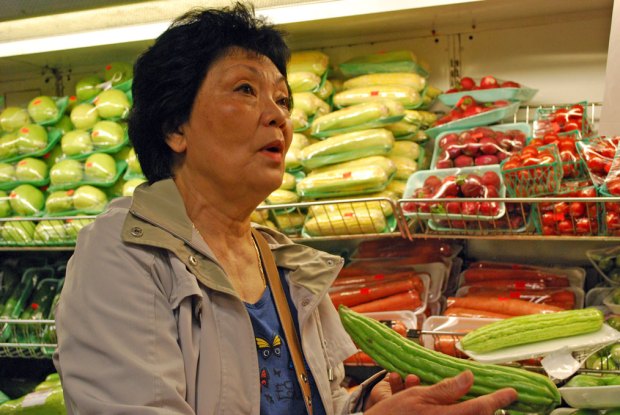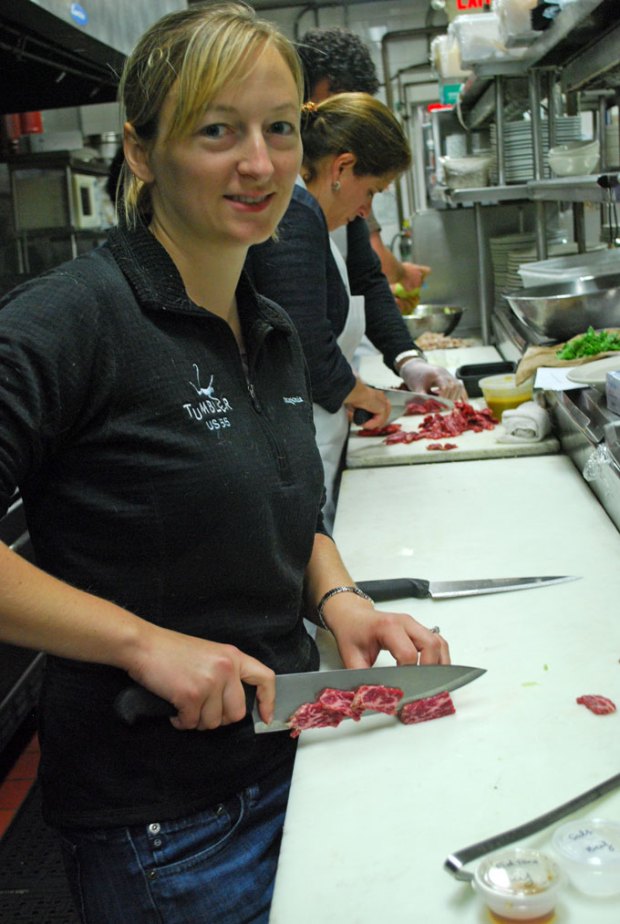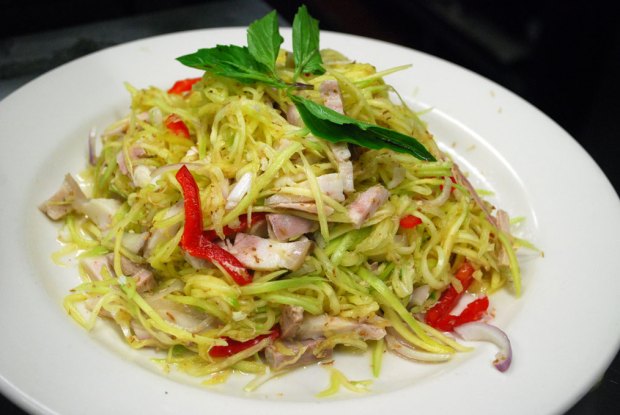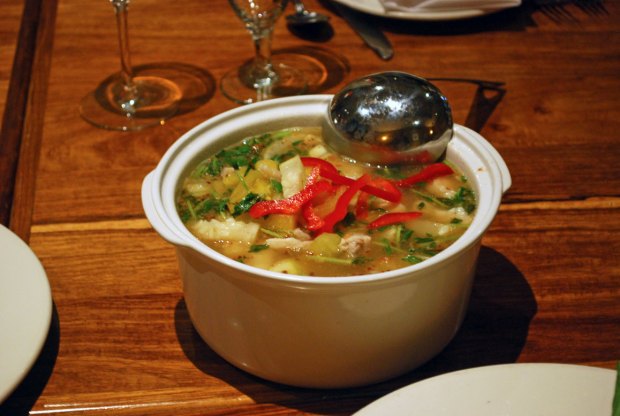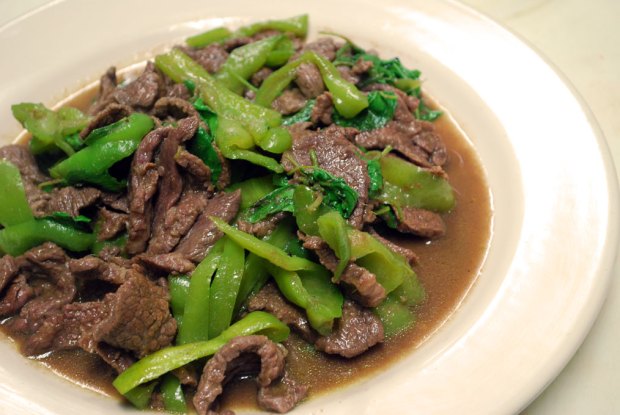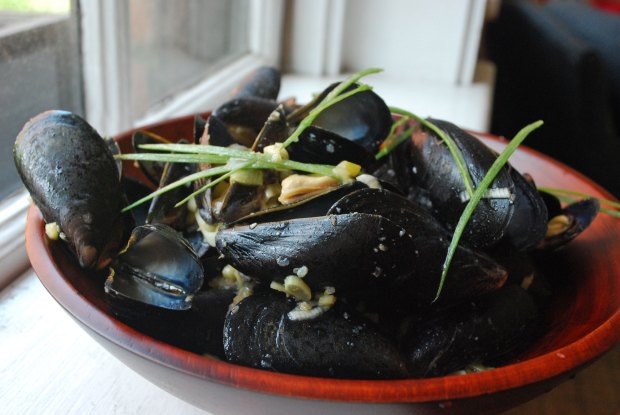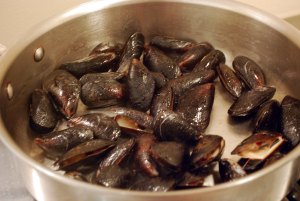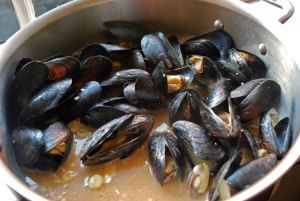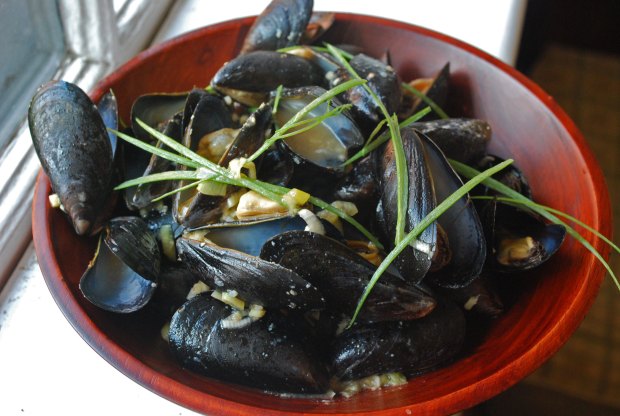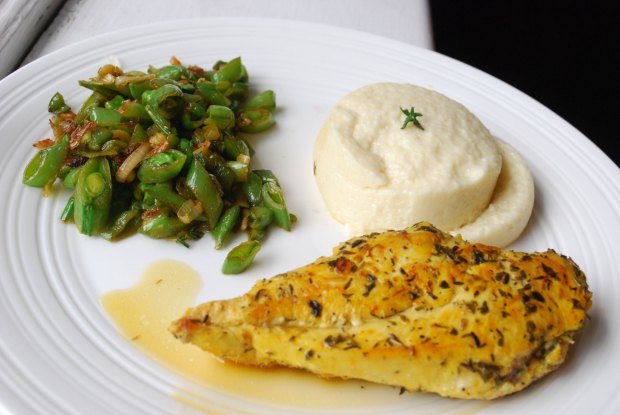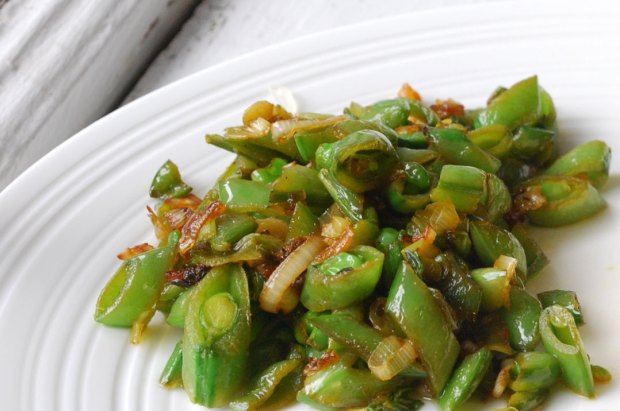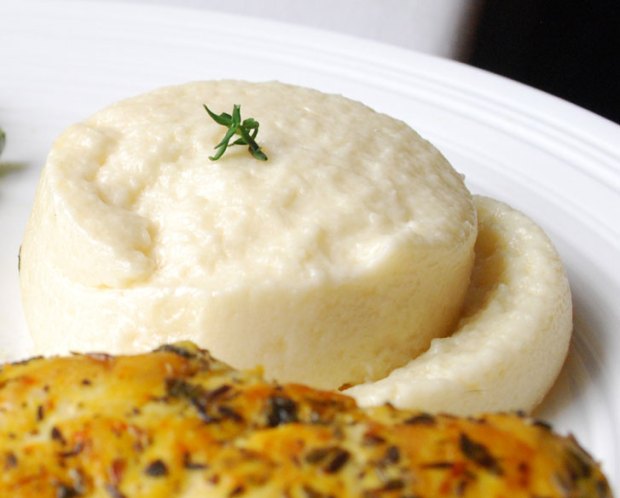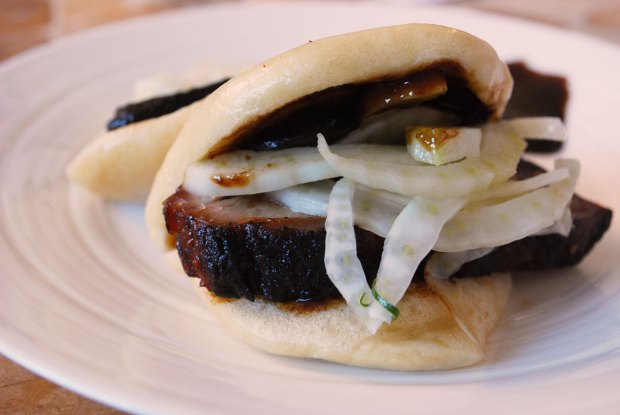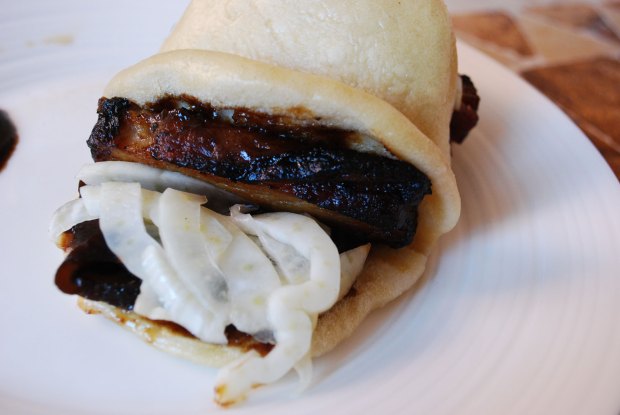All cooks find themselves in a rut from time to time. In those periods, the same dishes keep appearing on the dinner table week after week – in my case, momofuku noodles (post coming soon), pasta with meat sauce, and sauteed chicken breasts with rice. One solution to this would be to open up one of my million cookbooks and find myself a recipe, clearly. A slightly more expensive — and certainly more entertaining — fix is to find a cooking class! Even better, find a cooking class for a cuisine with which you are unfamiliar. This will ensure both education and several new avenues for experimentation to keep you out of that rut for a long while!
Last weekend, my mother and I attended a cooking class at a local Cambodian restaurant, The Elephant Walk. Their courses (and food!) were recommended to us by a close friend, and how right he was. We had a fantastic time visiting a Cambodian market and then returning to the Elephant Walk kitchen to cook up a three-course lunch, which we promptly devoured with delicious wine to accompany.
We chose the class called “Doing It All on Market Day”. This cost a little more, but was worth every penny. We arrived at 8:30 at the restaurant and traveled from there to Revere, one of the three largest Cambodian communities in the United States (the other two are Lowell, MA and Long Beach, CA). A little store market there carried produce and non-perishables from Cambodia, Thailand, Vietnam, China, and Latin America. As Longteine de
Monteiro, Elephant Walk’s head chef, explained, as property values in neighborhoods near Boston have risen, Hispanics have moved in to places the Cambodians can no longer afford. Thus, the market showcased Thai basil next to cilantro, tamarind alongside tomatillos, and lemongrass sidled up to habaneros. I wish I had taken more pictures of the various exotic vegetables, like banana blossoms, khmer eggplant, and string beans that measured two feet long! Here is Longteine showing us a fuzzy melon (which is like a spongy squash):
Notice the cactus in the bottom right! Another “melon” to which we were introduced was called bitter melon – although this one was more like a cucumber:
With each new vegetable, she explained to us how they would be used. Most to all of them can go into sour soup, if you’re wondering. If you want more than my memory can provide, fear not! There’s The Elephant Walk Cookbook too.
Once we collected everything we’d need for our class (plus Mom and I picked up bean sprouts, mushroom soy sauce, and tamarind paste to make some Pad Thai later), we headed back to the restaurant. The 10 or so participants picked partners, and each pair was assigned a course. Mom and I chose the Spicy Beef with Peppers and camped out at a station in the kitchen. Everything was very clean and organized, and our mise had already been put en place:
Much of the above you’ll recognize: salt, sugar, fish sauce, jalapenos and cubanelle peppers. The odd ginger-like thing at the top is called galangal or a rhizome. It is similar in look, texture and use-value to ginger, but tastes more peppery than gingery. At the top left, you can see the base of a container full of the most incredible ambrosia… lemongrass paste, they call it. To make it, blend the following ingredients together for 2-3 minutes until smooth:
2 Tblsp. thinly sliced lemongrass
2 large garlic cloves, coarsely chopped
1 medium shallot, coarsely chopped
2 teaspoons peeled, coarsely chopped galangal
1/2 tsp. tumeric
1/2 cup water
We spent about 35 minutes cooking, and then shared our dishes – green mango salad, sour soup with tilapia, and spicy stir-fried beef at a long table set for an elegant party. I highly recommend the experience — very good food and definitely a departure from my norm. The restaurant also offers courses in French-Asian fusion, Vegan & Vegetarian Cooking, and Pan Sauces, just to name a few. The instruction wasn’t very comprehensive in terms of technique, especially given that in some cases the lemongrass paste was already made and the peppers already chopped, but we had a pretty well-trained group. For me, the class was more about thinking through new flavor combinations and using ingredients I’ve never seen before. Consider that rut a thing of the past!
I also enjoyed seeing the class through the lens of a world history teacher. Since my last post, I have finished a master’s program at Harvard Graduate School of Education, and have spent two years teaching and living at a boarding school. No wonder I don’t have time for blogging! But throughout my cooking class last Saturday, I couldn’t stop thinking about how none of our dishes would have been possible without the Columbian Exchange, the term used to describe the integration of crops and people from the Americas and the rest of the world. For most of recorded history, these two hemispheres were separated by unnavigable waters. They thus developed quite different species of flora and fauna. In the Americas, people grew potatoes, peppers, corn, tomatoes, and pineapple – none of which had been seen before 1492 by farmers in Europe, Africa, or Asia. Men from those continents brought wheat, rice, onions, most spices, and sugar — not to mention cows, pigs, chickens, and sheep — across the Atlantic to revolutionize agriculture in the Americas. See how many Old World/New World interactions you can find in the below recipes!
Nyuom Svay (Green Mango Salad), serves 4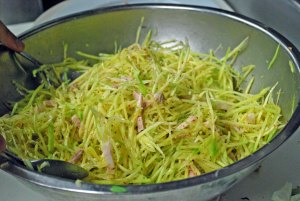
4 medium green mangoes, finely julienned
1 large shallot, very thinly sliced
8 oz. cooked pork belly or pork butt, very thinly julienned
1/2 cup fresh grated coconut, roasted
1/2 cup julienned red bell pepper
1 Tblsp. salt
1 Tblsp. fish sauce
3 Tblsp. sugar
1 to 2 Tblsp. fresh lime juice to taste
In a large bowl, toss all the ingredients together. Garnish with fresh mint or basil. [The recipe book we were given suggests you need 1 cup loosely packed mint, and the same amount of Thai basil. But if you see the photos, I don’t see anywhere near that much shown. I think that the flecks of brown are the toasted grated coconut.]
Samalh Machou Trey (Sour Soup with Tilapia and Pineapple), serves 4
4 cups chicken broth
3 tilapia filets, cut into 2 1/2 inch pieces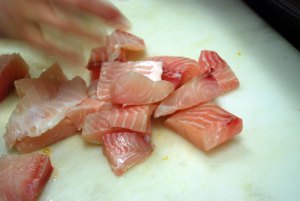
2 cloves garlic, smashed
1 1/2 Tblsp. sugar
1/2 tsp. salt
2 Tblsp. fish sauce
2 Tblsp. fresh lime juice
8 oz. pinapple, julienned 1/2 inch thick
8 oz. fuzzy squash (see photo above), peeled and cut into the same size as pineapple
2 plum tomatoes, quartered (we used green tomatoes)
3 Tblsp. fried chopped garlic
1 cup sliced Maam, aka “French mint” or “Asian cilantro” (see image at right)
Put the chicken broth in a medium stockpot and bring to a boil. Add the garlic, pineapple, squash, tomatoes, salt, sugar, and fish sauce. Return to a boil, reduce the heat to medium, and simmer for 5 minutes until the vegetables are soft.
Gently stir in the lime juice and the fish and cook for another 8 minutes.
Add the fried garlic and maam. Serve immediately with cooked jasmine rice in the individual bowls.
Saiko Cha K’dao (Spicy Stir-fried Beef), serves 4
3/4 lb. cubanelle peppers (about 3 large)
1/4 lb. jalapeno peppers (about 5)
1/4 c. vegetable oil
1 recipe lemongrass paste (see above)
1 lb. boneless sirloin, cut into strips 2 inches long, 1 1/2 inches wide, and 1/4 inch thick. [she told us we had short rib meat. Not sure if that is the case]
1 1/2 Tblsp. sugar
1 Tblsp. fish sauce
1 tsp. salt
2 cups loosely packed fresh mareh preuw (aka holy basil) or regular basil leaves (see photo)
 Slice the peppers very thinly lengthwise, removing seeds and veins. Then cut into 2 inch lengths. Heat the oil in a large skillet or wok over medium-high heat. Add the lemongrass paste and cook until its aroma is released, about 1 minute.
Slice the peppers very thinly lengthwise, removing seeds and veins. Then cut into 2 inch lengths. Heat the oil in a large skillet or wok over medium-high heat. Add the lemongrass paste and cook until its aroma is released, about 1 minute.
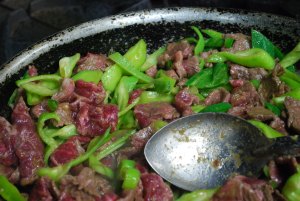 Stirring well as you go, add the beef, peppers, sugar, fish sauce and salt, and simmer for 3-4 minutes, until the meat is cooked through. Remove from the heat and add the herbs. Serve with rice.
Stirring well as you go, add the beef, peppers, sugar, fish sauce and salt, and simmer for 3-4 minutes, until the meat is cooked through. Remove from the heat and add the herbs. Serve with rice.
Thank you, Nyep, for the great class. Thank you, Mom, for inviting me to the great class. Thank you, Eric, for the gift certificates that allowed us to take the great class!


